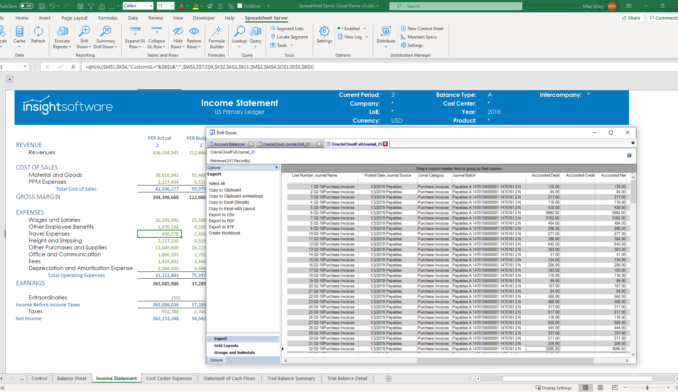Ultimate Guide to Equity Compensation Management and Software

For small entrepreneurial businesses, equity compensation can be a very attractive way to attract and retain highly talented employees. In a nutshell, equity compensation is defined as non-cash remuneration that takes the form of stock options, restricted shares, employee stock purchase plans, and other vehicles that provide employees with an equity stake in the company. Equity compensation may also apply to non-employee services provided by independent contractors, board members, or advisors.
This is a win for the company because it requires little or no initial cash outlay and provides a powerful incentive for all parties to drive the company forward to success. It’s a win for employees and contractors because the potential upside can be very high. The downside, of course, is that the company’s equity could turn out to be worthless. In this respect, equity compensation offers a model in which both risks and rewards are shared by plan participants.
Different Forms of Equity Compensation
Equity compensation can take a number of different forms. These include:
- Employee stock options afford an employee the right to purchase a given number of company shares at a predetermined price. There are two types of employee stock options – incentive stock options and non-qualified options. These two are taxed differently, and there are different guidelines that dictate who is eligible to receive them.
- Employee stock purchase plans (ESPPs) enable employees to buy shares of the company at a discounted price, using after-tax payroll deductions. There are qualified and non-qualified forms of ESPPs. The former offers some tax benefits, although it -will require a minimum holding period.
- Restricted stock Awards (RSAs) involve an outright grant of shares, but they are restricted until the shares vest meaning the employee can’t sell or dispose of them until that that point. Employees generally pay nothing for RSAs, but are liable for taxes when the shares vest.
- Restricted stock unit (RSUs) are similar to RSAs except shares are not actually issued until vesting date meaning the shareholder has no rights until that time. RSUs may require employees to pay for shares at fair market value.
- Stock appreciation rights (SARs) give an employee a claim to the company’s share price increase over a given period. SARs do not require the employee to actually purchase shares. There are two types of awards; cash settled, or stock settled.
- Performance shares are awarded for achieving predetermined performance targets. They are frequently given to top executives and board members and aligned with strategic company objectives.
Managing Equity Compensation Plans
Although equity compensation plans can be a very powerful component in your company’s overall strategy, there are a number of complexities to consider. These include share dilution, employee income reporting requirements, legal compliance, and properly accounting for expenses and liabilities in the company’s financial statements.
Early startup companies may find it difficult to accurately assess the value of equity shares. This presents a number of challenges, potentially impacting hiring decisions and appropriate share allocations for new employees, as well as tax reporting and financial accounting. Although companies may find valuation difficult, there are several well-established methods for coming up with a reasonably accurate number. Perhaps even more importantly, these approaches provide your company with the legally sound method of determining share values, which supports you in your efforts to remain compliant with all relevant legal, reporting, and tax standards.
A key element in managing equity compensation is a cap table (short for “capitalization table”). This is a list of company shareholders, plus any warrants, options, and other related securities. The cap table provides one-stop visibility to the company’s overall capital structure as well as detailed information pertaining to each stakeholder. It lists each owner’s legal name and address, spells out how much was paid for equity, and calculates the percentage of ownership for each investor.
Cap tables can also serve an important function in managing the company. When human resources wants to make an offer of employment, they’ll need to know how many shares are available, and how much of an incentive those shares might represent. Without an up-to-date cap table, the company won’t have accurate answers to those questions.
The best equity management solutions will make it relatively easy to manage cap tables and record allocations of company stock, whether that is in the form of options, ESPP shares, RSUs, or any other vehicle. They’ll also streamline tax reporting and compliance, helping your company to avoid potential headaches down the road.
Tax and compliance issues can be especially complex for companies with a globally dispersed workforce. Proper management of equity compensation requires an adequate understanding of the particular requirements in each jurisdiction (including tax compliance and regulatory reporting).
Capitalization & Equity Compensation Management
Access ResourceScaling Up
Early startups often resort to spreadsheets to manually track equity compensation. Before long, though, that process becomes unwieldy. As the company takes in new rounds of investment and as new employees join the organization, the cap table can quickly grow complicated.
Keeping your cap table up-to-date can become challenging. As it becomes more and more complicated, the likelihood of errors can increase significantly. With each new investment round or new hire, new entries must be made into the cap table. As employees leave the company or exercise options, you must make further adjustments. Many companies end up with multiple versions of a cap table spreadsheet, leading to confusion about which is correct.
Considering the negative impact of getting things wrong, companies should place a high priority on accurate, reliable management of equity compensation plans. Good, clean record-keeping becomes critically important to meet legal and tax obligations and to maintain positive relationships with investors. They need systems that can easily scale up as their business grows.
Tailor-Made Tools for Equity Compensation Management
A word of caution is in order here: growing companies should not wait until things get too complicated before they take action. The time to bring equity management under control is when things are still working well–not after they have broken.
Certent Capitalization and Equity Management provides private companies with complete and accurate control over the capital management process. As your company grows through various rounds of funding, through IPO and potentially even the complex world of public company equity and reporting management, Certent can scale with you. Start your business off on the right track.






